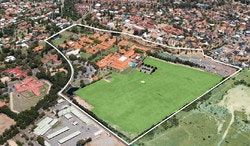Year 12 Economics ATAR
Overview
The Economics ATAR course develops student learning through two content areas:
- Economic knowledge and understanding
- Economic skills.
Unit 3 - Australia and the Global Economy
The unit explores the linkages between economies and the concepts of globalisation, trade liberalisation and protection in relation to the Australian economy. Students examine Australia's trade, the recording of international transactions and the impact of these transactions on the Australian economy. Students examine the effects of changes in Australia's economic transactions with the rest of the world using recent (the last ten years) and contemporary (the last three years) economic data, together with economic models.
Unit 4 - Economic policies and management
The unit explores how economic policies and actions, such as fiscal policy, monetary policy and microeconomic policy operate in the pursuit of the Australian Government's economic objectives. Students examine the effects of the operation of policies in Australia using economic models along with recent (the last ten years) and contemporary (the last three years) economic data.
Topics
Unit 3 and Unit 4 are delivered concurrently.
Unit 3: Global interdependence. Free Trade and Protection. Pattern of Trade. Balance of Payments. Terms of Trade. Exchange Rates. Foreign Investment.
Unit 4: The business cycle. The aggregate expenditure model. The aggregate demand and aggregate supply model. Economic policy objectives. Fiscal policy. Monetary policy. Structural change. Measures to improve productivity.
Assessments
|
Weight
|
Types of assessments
|
Number of assessments
|
|
30%
|
Data Interpretation / Short answer
An answer of less than 150 words that can include discuss, explain or analyse an economic concept, event or issue.
Formats can include: multiple-choice questions, calculations and/or short answer questions that can require a definition, description, explanation or application of economic concepts, theories and/or models. Typically questions require students to interpret real or hypothetical economic data or information, such as graphs, tables, text or cartoons.
Typically tasks are a combination of these formats.
|
Six assessments over the year. Set approximately every 4 weeks. Usually 50 minutes in duration
|
|
30%
|
Extended answer
The question can require a description, discussion, explanation and/or analysis of an economic concept, event or issue, and the application of economic theories and/or models. The question can include stimulus material. Formats can include: an essay, a sectionalised long answer, an investigation and/or a response to a scenario or a case study.
|
Six assessments over the year. Set approximately every 4 weeks. Usually 50 minutes in duration
|
|
40%
|
Examination
Typically conducted at the end of each semester and/or unit and reflecting the examination design brief for this syllabus.
|
Two exams. Held at the end of each semester. 3 hours in duration.
|
Reporting
A grade will be assigned following the completion of the course unit.
|
Grade
|
Interpretation
|
|
A
|
Excellent achievement
|
|
B
|
High achievement
|
|
C
|
Satisfactory achievement
|
|
D
|
Limited achievement
|
|
E
|
Very low achievement
|
Each grade is based on the student's overall performance for the course unit as judged by reference to a set of pre-determined standards. These standards are defined by grade descriptions.
Student Expectations/Homework
Students will be expected to complete approximately 2.5 hours homework each week. This time should be spent consolidating material covered in class and working through questions in their workbook.
